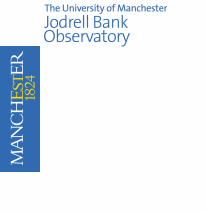Detailed Summary of the JCMT Plane Survey
The JCMT Plane Survey (JPS) is a survey of two thirds of the Galactic Plane in the submillimetre continuum using the new SCUBA-2 continuum array detector. The survey is planned to begin in early 2007 and will map the region between 10° < l < 250° in the latitude range |b|<1°, corresponding to the scale height of OB stars at 3kpc. The spatial resolution will be 8&Prime at 450μm and 14&Prime at 850μm and the survey sensitivity will be around 1Mo (roughly a thermal Jeans mass) at 3kpc and 40Mo at 20kpc. The JPS is designed to provide the means to answer key questions in massive star formation by revealing all stages of the process and all the significant mechanisms operating on scales from dense cores to that of the whole Galaxy. It will provide the first complete source samples of high-mass YSOs and protoclusters in a complete range of Galactic environments, placing massive star formation research onto a firm statistical basis for the first time. This will allow the most exhaustive investigation into the physics that determines the upper IMF that can be undertaken in a spiral galaxy from our unique close-up vantage point. The knowledge gained from such a survey will have far-reaching benefits for the whole of astrophysics.The current big questions in star formation are largely centred on the processes related to high-mass and large-scale star formation, since it is high-mass stars that produce the powerful feedback into the star-formation process and into the processing of the interstellar medium. Specifically, progress in the field demands an understanding of: the variation in the star formation efficiency and its relationship to the strength of triggering mechanisms; the origin of the stellar initial mass function, the degree to which it varies and its relationship to the mass function of structures in molecular clouds; the formation and evolution of stellar clusters and their relationship to high-mass star formation; the distinction between spontaneous and induced (or triggered) star formation; the problem of rapid accretion rates and the nature of the high-mass star-formation process; the evolution of high-mass YSOs and the reliable identification of evolutionary stages; the nature of molecular clouds, their support and the initial conditions for star formation; the effect of environment and magnetic fields on the star-formation process.
All these questions can be addressed only by assembling representative samples of star-forming regions, YSOs, molecular cloud complexes, cold diffuse clouds, and the ambient interstellar medium with which these objects interact. The acquisition of such samples requires a comprehensive survey of a large fraction of the plane of the Galaxy. JPS will be complementary to a number of other important existing or planned Galactic Plane surveys allowing many wider questions to be addressed. It will also provide a legacy archive from which future researchers can extract data samples whose selection is not completely pre-determined by the present scientific priorities.
The JPS is organised so as to cover the GLIMPSE survey area (including the BU/FCRAO Galactic Ring Survey), 10° < l < 65°, and the FCRAO Outer Galaxy region, 102.5° < l < 141.5°, in its first two years.
